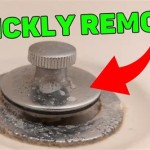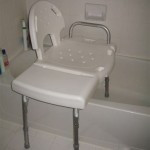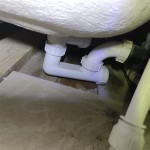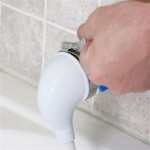How to Repair a Hole in a Bathtub
Discovering a hole in a bathtub can be a homeowner's nightmare. Whether caused by accidental damage, wear and tear, or a faulty installation, a bathtub hole requires prompt attention to prevent further damage and costly repairs. This article provides a comprehensive guide to understanding the causes, identifying the type of hole, and outlining repair options for a damaged bathtub.
Common Causes of Bathtub Holes
Understanding the cause of the bathtub hole is crucial for selecting the appropriate repair method. Common causes include:
- Impact Damage: Dropping a heavy object can chip porcelain or acrylic, creating a hole.
- Corrosion: Over time, rust can weaken cast iron tubs, leading to holes.
- Stress Cracks: These can develop due to improper installation or house settling.
- Faulty Manufacturing: In rare cases, a bathtub may have pre-existing weaknesses that eventually lead to holes.
- Chemical Damage: Certain harsh chemicals can damage the bathtub surface, causing deterioration and eventually holes.
Identifying the Type of Bathtub and Hole
Bathtubs are typically made from acrylic, porcelain on steel, or cast iron. Each material requires a different repair approach. Similarly, the size and type of hole dictate the appropriate fix. Small chips and cracks can often be repaired with DIY methods, while larger holes may require professional intervention.
DIY Repair Options for Small Holes and Cracks
For minor damage, several DIY repair kits are available. These kits usually contain epoxy resins, hardeners, and fillers. The following steps outline a typical DIY repair process:
- Clean the Area: Thoroughly clean the area around the hole with a suitable cleaner and allow it to dry completely.
- Sand the Surface: Lightly sand the area to create a rough surface for better adhesion of the repair material.
- Mix the Epoxy: Follow the manufacturer's instructions to mix the epoxy resin and hardener.
- Apply the Epoxy: Carefully apply the epoxy to the hole, ensuring complete coverage and slightly overlapping the surrounding area.
- Smooth the Surface: Use a putty knife or similar tool to smooth the epoxy and create an even surface.
- Cure Time: Allow the epoxy to cure completely according to the manufacturer's instructions.
- Sand and Finish: Once cured, sand the repaired area smooth and apply a matching finish if necessary.
Professional Repair for Larger Holes
Larger holes or damage to structural components require professional repair. A professional plumber or bathtub refinisher can assess the damage and recommend the best course of action. This may involve patching the hole, refinishing the entire tub, or even replacing the tub altogether.
Preventing Future Bathtub Holes
Preventing future bathtub holes involves careful usage and regular maintenance.
- Avoid Dropping Heavy Objects: Use caution when handling heavy objects near the bathtub.
- Use Bath Mats: Bath mats can help prevent slips and falls that may lead to impact damage.
- Regular Cleaning: Regular cleaning with appropriate cleaners can prevent buildup and corrosion.
- Inspect for Damage: Regularly inspect the bathtub for any signs of damage and address them promptly.
- Address Leaks Promptly: Leaks can lead to corrosion and weakening of the bathtub structure.
Choosing the Right Repair Products
Selecting the correct repair product is crucial for a successful repair. Consider the following factors when choosing a product:
- Bathtub Material: Different products are formulated for different bathtub materials.
- Hole Size: Choose a product appropriate for the size and type of hole.
- Color Matching: If a visible repair, ensure the product can be color-matched to the bathtub.
- Durability: Select a durable product that can withstand regular use and cleaning.
When to Replace a Bathtub
While repairs can often extend the life of a bathtub, sometimes replacement is the most cost-effective and practical solution. Consider replacement if:
- Extensive Damage: Multiple holes or widespread damage may be too costly to repair.
- Age of the Bathtub: An older bathtub may be nearing the end of its lifespan and prone to further problems.
- Major Renovation: If undertaking a bathroom renovation, it may be a good opportunity to replace the bathtub.
Repairing a hole in a bathtub can range from a simple DIY project to a more complex professional repair. Understanding the cause of the damage, the type of bathtub, and the available repair options empowers homeowners to make informed decisions and prevent further damage to their bathrooms. Proper care and maintenance can significantly extend the life of a bathtub and minimize the risk of future holes.

How To Fix A Hole In Bathtub Fiberglass

Ed Bathtub Floor Repair Leaking Tub Or Shower

Bathtub Hole Repair Happy Tubs

How To Fix A Hole In Bathtub Easy Diy Guide

Hole Repair S Joy Of St Croix Tub More

Fix Whole In Bathtub Faucet Doityourself Com Community Forums

Why Do Bathtubs How To Maintain Repair Bathtub S 2024

How To Repair A Hole In Your Tub

Bathtub Repair In Dallas Tx Happy Tubs

How To Fix A Hole In The Bathtub Diy Repair Bathroom Makeover
Related Posts








